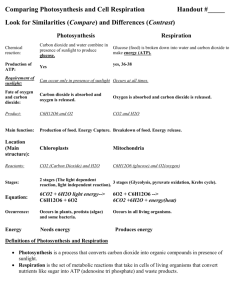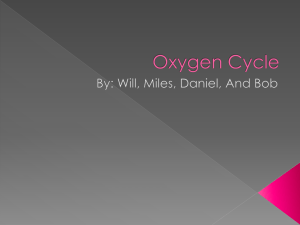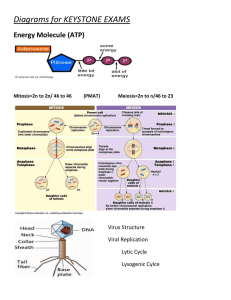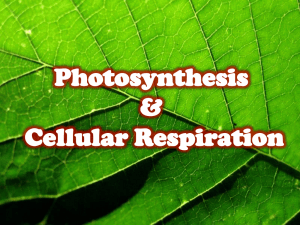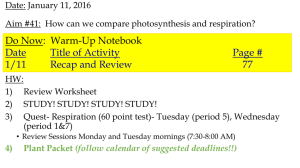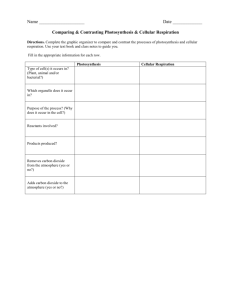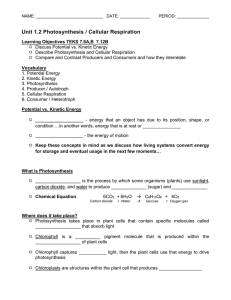Photosynthesis/Respiration Notes
advertisement
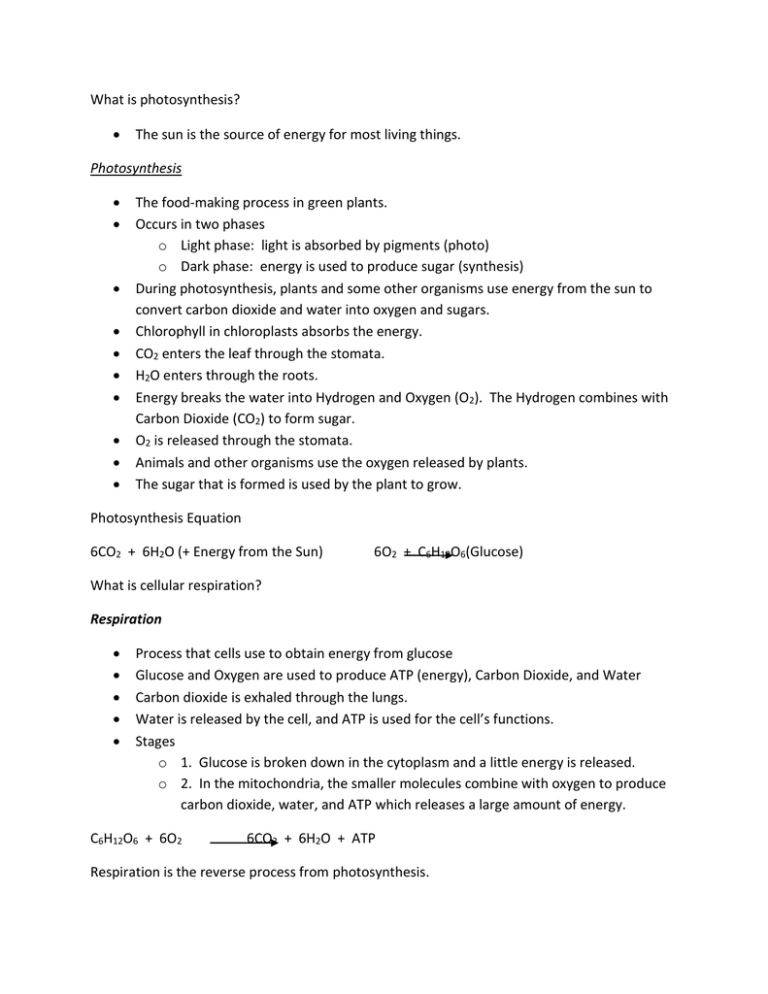
What is photosynthesis? The sun is the source of energy for most living things. Photosynthesis The food-making process in green plants. Occurs in two phases o Light phase: light is absorbed by pigments (photo) o Dark phase: energy is used to produce sugar (synthesis) During photosynthesis, plants and some other organisms use energy from the sun to convert carbon dioxide and water into oxygen and sugars. Chlorophyll in chloroplasts absorbs the energy. CO2 enters the leaf through the stomata. H2O enters through the roots. Energy breaks the water into Hydrogen and Oxygen (O2). The Hydrogen combines with Carbon Dioxide (CO2) to form sugar. O2 is released through the stomata. Animals and other organisms use the oxygen released by plants. The sugar that is formed is used by the plant to grow. Photosynthesis Equation 6CO2 + 6H2O (+ Energy from the Sun) 6O2 + C6H12O6(Glucose) What is cellular respiration? Respiration Process that cells use to obtain energy from glucose Glucose and Oxygen are used to produce ATP (energy), Carbon Dioxide, and Water Carbon dioxide is exhaled through the lungs. Water is released by the cell, and ATP is used for the cell’s functions. Stages o 1. Glucose is broken down in the cytoplasm and a little energy is released. o 2. In the mitochondria, the smaller molecules combine with oxygen to produce carbon dioxide, water, and ATP which releases a large amount of energy. C6H12O6 + 6O2 6CO2 + 6H2O + ATP Respiration is the reverse process from photosynthesis.

